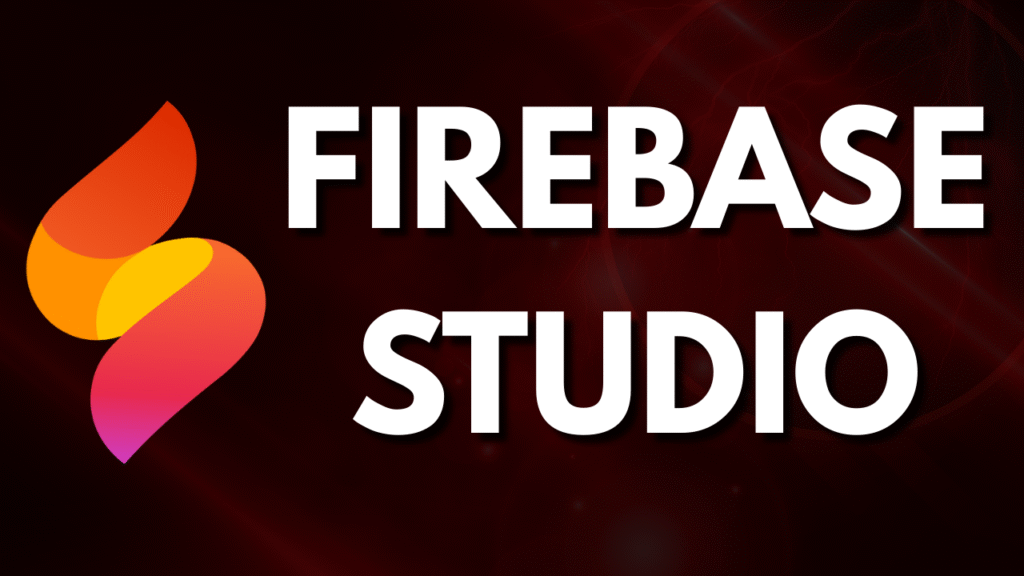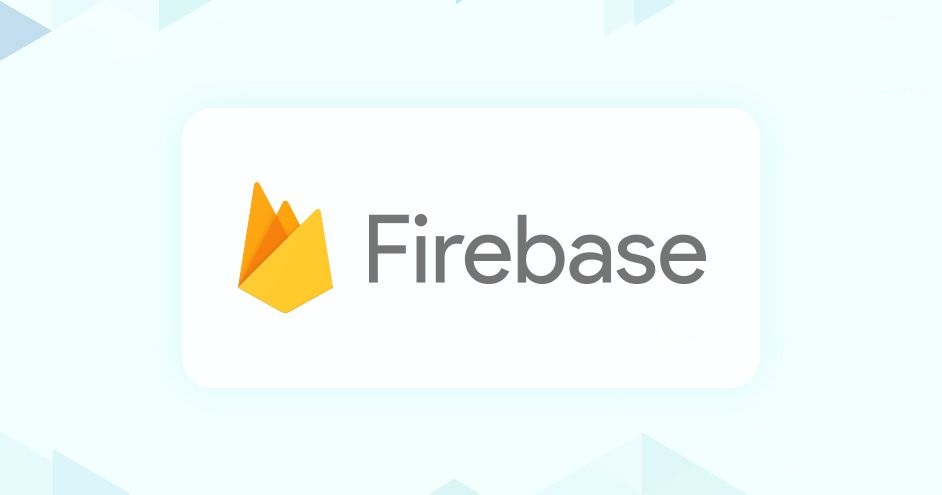Introduction
In today’s digital-first world, the demand for apps is higher than ever—but not everyone has the time or expertise to learn programming. This gap has given rise to a powerful movement: no-code development, where anyone can build fully functional apps using visual tools and pre-built components. Among the many players entering this space, Firebase Studio—Google’s no-code app builder—is emerging as a game-changer.
Built on the strong backend infrastructure of Firebase, Firebase Studio allows users to design, develop, and deploy web apps without writing a single line of code. It combines a drag-and-drop user interface with seamless access to Google’s suite of tools like Firestore, Authentication, and Hosting.
This article explores the journey from traditional coding to visual app creation and highlights how Firebase Studio is leading the charge. From powerful features and real-world use cases to industry comparisons and future potential, we’ll break down what makes this tool stand out in the fast-growing no-code landscape.
The Evolution of App Development: From Code to Click
App development has undergone a major transformation over the past decade. Traditionally, building an app required deep technical knowledge of programming languages like JavaScript, Swift, or Kotlin, along with backend expertise to manage databases, APIs, and hosting. This process was time-consuming, expensive, and limited to experienced developers or well-funded teams.
However, the landscape began to shift with the rise of low-code and no-code platforms. These tools allowed users to build applications visually, using drag-and-drop interfaces and pre-built components—dramatically lowering the barrier to entry. What once took weeks of coding could now be achieved in days, or even hours, without writing a single line of code.
This “from code to click” evolution has opened doors for a new wave of creators—entrepreneurs, educators, marketers, and small businesses—who now have the power to build apps without needing a developer.
Firebase Studio sits at the heart of this shift. Backed by Google’s robust Firebase backend, it merges no-code simplicity with production-grade tools. This combination not only accelerates development time but also empowers non-technical users to bring their ideas to life—faster and smarter than ever before.
Firebase Studio: A New Era for Google’s Developer Tools
Firebase Studio marks a pivotal evolution in Google’s suite of development tools—bringing the power of app creation to non-developers, startups, educators, and business teams. While Firebase has long been recognized as a go-to backend-as-a-service (BaaS) platform—offering tools like Firestore, Authentication, and Cloud Functions—Firebase Studio adds a visual layer on top of this powerful foundation.
Unlike traditional Firebase projects that require frontend development in frameworks like React or Flutter, Firebase Studio enables users to build entire applications visually. From UI layout to backend integration, everything is handled through a clean, drag-and-drop interface—making the development process faster, more accessible, and far less technical.
This is a bold move by Google, signaling its recognition of the no-code revolution. By combining Firebase’s robust infrastructure with visual development capabilities, Firebase Studio is not just a simplified builder—it’s a production-grade solution capable of scaling with user needs.
Whether you’re creating an MVP, internal dashboard, or educational app, Firebase Studio offers a developer-like experience without writing a single line of code. It bridges the gap between ideation and execution, redefining what it means to “build an app” in today’s modern development landscape.

Key Features Making Firebase Studio a Game-Changer
Firebase Studio isn’t just another no-code tool—it’s a comprehensive development environment designed to deliver both simplicity and scalability. Backed by Google’s Firebase infrastructure, it brings powerful capabilities to users without requiring a background in software development. Here are the standout features that make Firebase Studio a true game-changer:
Drag-and-Drop App Builder
Users can design responsive, multi-page web apps using an intuitive drag-and-drop interface. Elements like buttons, forms, lists, and navigation components can be added and customized visually—ideal for non-developers.
Seamless Firebase Integration
Firebase Studio connects directly with Firestore (for real-time databases), Firebase Authentication (for user management), and Firebase Hosting—all without manual setup. This makes deploying data-driven, secure apps faster than ever.
Real-Time Updates
Thanks to Firestore integration, apps built with Firebase Studio can handle real-time data syncing, making it ideal for chat apps, dashboards, collaborative tools, and other live content use cases.
Visual Logic & Workflows
Without writing code, users can define interactions and logic—such as form validation, conditional flows, or data triggers—using a visual logic builder. This allows dynamic behavior with no technical complexity.
One-Click Deployment
With Firebase Hosting tightly integrated, users can publish their app with a single click and receive a live, HTTPS-secured web link instantly.
These features combine to make Firebase Studio a uniquely powerful tool—capable of building production-ready applications in record time, regardless of the user’s technical background.
Use Cases Across Industries
One of the greatest strengths of Firebase Studio is its versatility. It’s not just a tool for tech startups—it’s empowering individuals and organizations across diverse industries to build apps quickly, affordably, and without hiring developers. Here are some standout use cases:
Entrepreneurs & Startups
Startups can now launch MVPs (Minimum Viable Products) in days instead of months. With Firebase Studio, founders with no coding background can test business ideas by creating real-time apps with user login, data collection, and visual dashboards. For example, a solo founder can build a job board, event management app, or custom CRM with ease.
Education & Training
Teachers and institutions are using Firebase Studio to build learning management systems (LMS), quiz apps, and student portals. The visual builder allows educators to customize tools tailored to their curriculum, helping students interact and engage without relying on third-party solutions.
Internal Business Tools
Companies often need custom tools that don’t justify the cost of full-scale development. With Firebase Studio, teams can create inventory trackers, employee management apps, or workflow automation dashboards—without tapping into engineering resources.
Nonprofits & Community Projects
Nonprofits can build donation tracking systems, volunteer coordination apps, or community feedback platforms—all without large budgets or tech teams. Firebase’s scalability and real-time data sync make it ideal for organizing and managing field activities.
Product Teams & UX Designers
Even product managers and designers can use Firebase Studio to prototype ideas with real user flows and data interaction—going far beyond static wireframes.
Whether you’re launching a business, managing a classroom, or streamlining internal operations, Firebase Studio adapts to your goals—proving that powerful apps are no longer limited to developers.
Firebase Studio vs Other App Builders
The no-code landscape is rapidly expanding, with tools like Bubble, Adalo, Glide, and OutSystems offering powerful ways to build apps visually. But Firebase Studio enters the arena with a unique advantage—tight integration with Google’s Firebase backend, offering production-grade scalability from the start.
Key Comparison Table:
| Feature | Firebase Studio | Bubble | Adalo | Glide |
| Ease of Use | ⭐⭐⭐⭐☆ | ⭐⭐⭐☆☆ | ⭐⭐⭐⭐☆ | ⭐⭐⭐⭐⭐ |
| Backend Integration | Built-in (Firebase) | Custom/API-based | Built-in (Adalo DB) | Spreadsheet-based |
| Mobile Support | Web-first (mobile responsive) | Strong (PWA) | Strong (native) | Good (PWA) |
| Real-time Data | ✅ Yes (Firestore) | Limited | Limited | Limited |
| Deployment | 1-click (Firebase Hosting) | Manual/API | App Store publish | Instant share link |
| Best For | Scalable web apps | Complex workflows | Native mobile apps | Simple dashboards |
Firebase Studio excels in building data-rich, real-time web apps that scale. It’s ideal for MVPs, internal tools, and user-centric dashboards where performance and Firebase-native services matter.
However, tools like Adalo or Glide may be more appropriate for users focused purely on mobile-first interfaces or spreadsheet-powered apps. Bubble is strong for complex logic and custom workflows but comes with a steeper learning curve.
Firebase Studio finds its niche as a bridge between ease-of-use and production-grade power. If you’re comfortable with Google’s ecosystem or already using Firebase, this tool offers unmatched speed and integration.
Challenges and Considerations
While Firebase Studio opens new doors for non-developers and startups, it’s not without its challenges. Understanding its limitations can help users set realistic expectations and make better decisions.
Learning Curve for Firebase Concepts
Although the interface is user-friendly, some familiarity with Firebase services—like Firestore structure, authentication flow, and hosting—can still be helpful. New users might feel overwhelmed when dealing with data modeling or security rules, especially if they’ve never worked with a backend system before.
Limited Mobile-Native Features
Firebase Studio is primarily focused on web applications. While apps can be mobile-responsive, there is no direct support yet for exporting fully native Android or iOS apps. Users seeking deep mobile integration may need to combine it with other tools or wait for future updates.
Tied to the Google Ecosystem
Being part of Firebase, the tool is inherently Google-centric. While this means seamless integration and scalability, it also means vendor lock-in. Migrating to another platform could be complex down the line.
Fewer Custom UI Options (for now)
Compared to platforms like Bubble, Firebase Studio currently offers fewer advanced UI customization features. Designers looking for pixel-perfect control might find it a bit limited—though this is expected to improve over time.
Despite these considerations, for many use cases—especially MVPs, dashboards, and internal tools—Firebase Studio still provides exceptional value and power.
The Future of Firebase Studio
As no-code development continues to reshape how apps are built, Firebase Studio is poised to play a major role in this transformation. Still in its early stages, this tool has already captured the attention of developers and non-developers alike—thanks to its seamless integration with Google’s Firebase ecosystem and its beginner-friendly interface.
Looking ahead, Firebase Studio is expected to evolve significantly. One of the most anticipated improvements is enhanced mobile-native support. While the current focus is on web apps, future updates could include options to export projects as native Android or iOS apps—closing a critical gap and opening up more opportunities for mobile-first development.
There’s also growing speculation about AI-assisted development features. Given Google’s increasing investment in AI and tools like Gemini, Firebase Studio could soon introduce smart suggestions, automated data binding, and natural-language prompts for building logic or UI components—making app creation even faster and more intuitive.
Additionally, we can expect stronger third-party integrations, allowing users to connect with APIs, payment systems, CRM tools, and more—bringing Firebase Studio closer to the versatility of platforms like Bubble or OutSystems.
Perhaps most importantly, Firebase Studio is helping redefine the developer landscape. By lowering the barrier to entry and allowing ideas to become apps in hours instead of months, it supports a future where anyone—regardless of technical background—can build meaningful, scalable software.
In short, the future of Firebase Studio is bright, and it’s likely to become a cornerstone of modern, accessible app development.
Conclusion
Firebase Studio represents a powerful shift in how apps are created—bridging the gap between non-developers and scalable, production-ready software. With its drag-and-drop interface, real-time Firebase integration, and one-click deployment, it empowers users to build fully functional web apps without touching code.
While it’s not without limitations, especially for mobile-native needs or advanced UI customization, Firebase Studio is ideal for startups, internal tools, education, and MVPs. As it evolves, features like AI assistance and broader integrations are likely to make it even more versatile.
In a world where speed, accessibility, and user empowerment matter more than ever, Firebase Studio stands out as a promising tool that democratizes development—turning great ideas into live apps, one click at a time.



